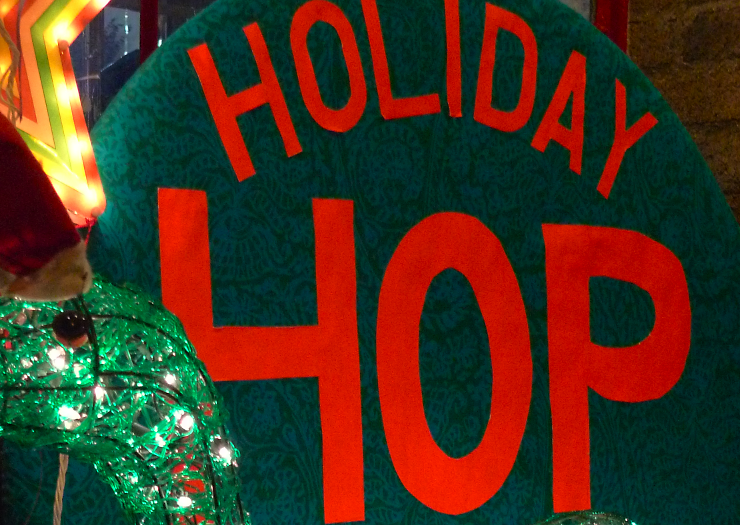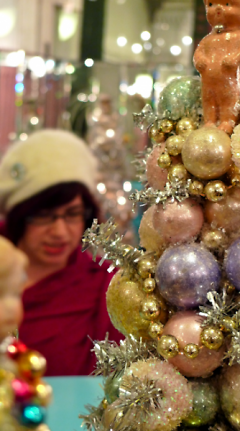Written by Jessa Dutton
We are in the midst of the holiday shopping season. An estimated $57.4 billion was spent in the United States during the Thanksgiving weekend. On average, shoppers spent nearly $407 each on gifts for others and themselves. An ever-increasing percentage of transactions were online, and many were at various destination malls, large-box stores with endless parking lots and seas of strip malls.
But what about the nearest downtown or neighborhood business district?
“Place Matters” is the theme of this section, so what do our choices in where we spend our money say about places that matter?
If residential neighborhoods are the heart of our communities, downtowns and neighborhood business districts are the soul. They are the intangible character that makes living in each community so special, so unique. We may live in tightly-knit residential areas, especially within Grand Rapids city limits, but a thriving residential population needs common places to gather. Restaurants, coffee houses, local retail shops and even the nearest neighborhood chain drugstore are where we bump into our friends and neighbors and feel a sense of community- of belonging.
Think about the closest downtown or neighborhood business district to your home. What does it feel like? Sure, it may serve the intended and important purpose of residents to purchase needed goods to sustain daily life. But there is something immaterial that resonates within once you walk in the door and are greeted by a neighbor, a shop owner or just a friendly stranger. That feeling is sense of pride, of belonging and of knowing that you are in it together. You, your neighbor and the shop owner: you are all there because each of you made a commitment to and investment in this place.
In 2009, there was a market study done in the city of Grand Rapids to assess the buying power of the community. The study revealed how much residents within the city limits spent on certain goods and services outside the city limits. In 2008, Grand Rapids city residents spent more than $311 million on "general merchandise" outside of the city limits. This means that city residents drove or rode public transportation to places like Rivertown Crossings Mall, 28th Street or East Beltline to spend their money on toys, home goods, auto parts and so on. Another $124 million was lost to supermarkets and grocery stores outside of Grand Rapids.
We are only sabotaging ourselves when we shop outside of our community. Before long, the cute retail near your favorite restaurant will not be there because too many residents decided to drive to the nearest mega-mall to grab a birthday present for a friend. The pharmacy on the corner will leave when residents don’t factor in the cost of driving to the superstore to get a cheaper price on a prescription. Without that shop, or the pharmacy, we will have one less place to connect to each other and to our community. And without that connection, we lose our sense of belonging.
The first Thursday of December is always a special night when it comes to place-based shopping. Uptown Holiday Shop Hop is an event where the feel of big city shopping comes right into our neighborhoods on the southeast side of Grand Rapids. What is always fascinating is not the number of people who come from other communities to experience the festive holiday atmosphere, but it is the resident who steps inside a store, just a stone’s throw from her home, for the very first time.
To her surprise, she finds that store owner has a stake in her community, just as she does. And she realizes that by her patronage of the store, she is perpetuating the symbiotic relationship between a commercial corridor and its surrounding residents, and her sense of belonging increases.
The holidays can be an easy time to test the waters of place-based shopping. Scratch a few people off your shopping list by purchasing items from stores within walking distance.
Once the holidays are over, don’t go back to your normal shopping habits. Preserve that relationship with your neighborhood stores.
So I challenge you, in 2014, to shop in place. Invest in those who make a real investment, physically right next door to you (or down the street, or one block over). From the family-owned shop to the national retailer right in your community, these businesses all serve a purpose and each has invested in your neighborhood in a real and tangible way.
It’s where we live.
The Rapidian, a program of the 501(c)3 nonprofit Community Media Center, relies on the community’s support to help cover the cost of training reporters and publishing content.
We need your help.
If each of our readers and content creators who values this community platform help support its creation and maintenance, The Rapidian can continue to educate and facilitate a conversation around issues for years to come.
Please support The Rapidian and make a contribution today.



